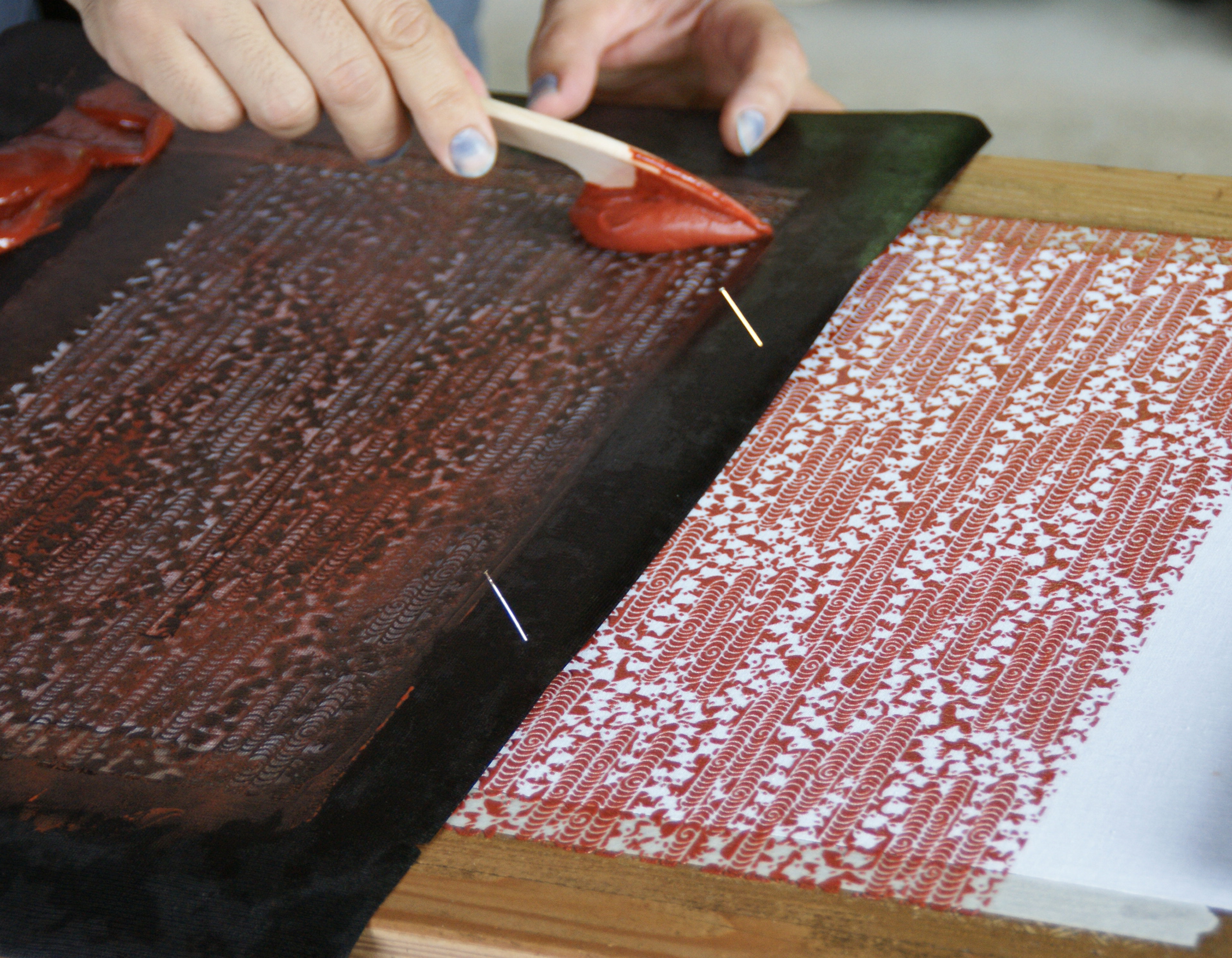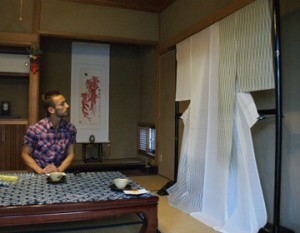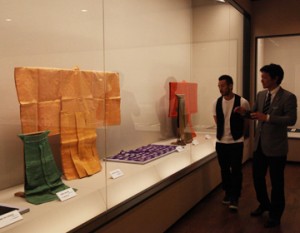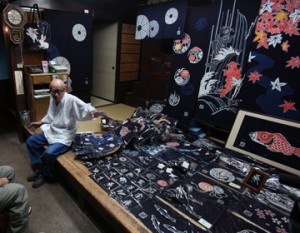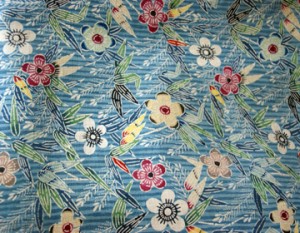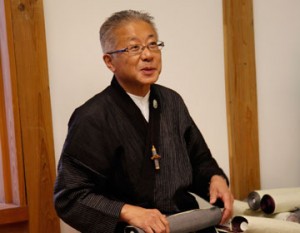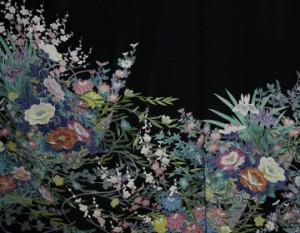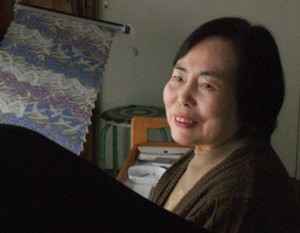Daimon, Edo komon and aizome yukata “Nagaita Chugata”
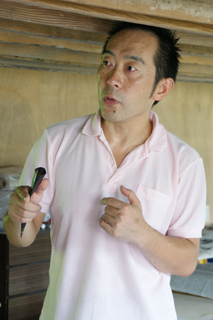
We visited the workshop of Nobuo Matsubara, who carries on the technique ”nagaita chugata” to dye yukata.
”I always use a paper pattern when I dye. The style is called nagaita chugata,” he explained.
”What do you mean by nagaita chugata?” Nakata asked.
”Nagaita means long board. Chugata means ’medium’ as opposed to ’small crest’ in Edo komon.”
”Do you mean that there is a ”Edo chumon”?”
”No. There’s no such thing. It refers to the size of the patterns.”
”There is a large crest or ”daimon”, right?”
””Daimon” is a large pattern used for happi or short coats worn at festivals, and we also call them ”Oogara””. In contrast, ”komon” patterns are so small that they can’t be seen from afar, and they are rich in color. With the technique nagaita chugata which has been used from my grandfather’s generation, the patterns are a little larger than ”komon”, and used mostly for yukata.”
There are many yukata, but only the traditional aizome yukata made from cotton or hemp uses the nagaita chugata technique.
Aizome yukata made with the traditional method is called ”nagaita chugata”, he told us.
As for how they are made, he told us ”It’s quicker for you to see for yourself rather than trying to explain.”, so we made our way to the workshop to observe.
Experiencing the dyeing process
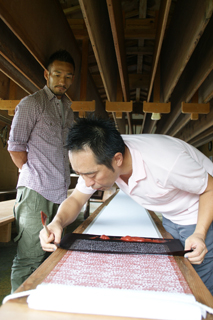
A cloth is strapped to a long board, and a paper pattern made from ”shibugami” is placed on top, then glue mixed with red dye is applied to the cloth. The process of placing the paper pattern and applying the red glue is repeated, so the design continues. While the red dye and glue mix acts as a guide, in the end, it will wash away with water, and the color will eventually fade away.
When the glue has been applied all throughout, it is dried in the sun, and the glue is applied to the back of the cloth as well. This is because with aizome or indigo dyeing, the cloth is immersed in the dye, so both sides of the cloth are dyed.
Yukata is worn as a single layer. There is no lining. The characteristic of nagaita chugata is that both sides of the cloth are dyed.
After observing Matsubara, Nakata also tried placing glue on a cloth the size of a ”furoshiki”.
”I’m finding that I must not move the spatula too quickly or the glue is too thin.” Nakata commented. In the margin of the fabric, he signed his name ”Hide” using the glue.
He soaked the fabric in indigo to add color, washed the glue away with water, patted it dry, and neutralized the cloth with acetic acid. Nakata held up the cloth which he had dyed. The pattern and his name showed through beautifully. Nakata was happy.
”I’d like to use this to wrap around my head when I work.” he said. Next on the list, he would like to challenge dyeing an entire yukata.
Using natural materials
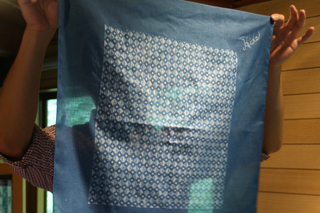
Nagaita chugata takes advantage of the properties of the glue, Matsubara told us.
So the quality of the glue is important.
Matsubara makes a fresh batch of glue every day by mixing rice paste and rice bran, taking into account the day’s temperature and humidity.
The glue is easy to apply, dry and wash, and completely natural.
Matsubara looked very pleased when he was talking about the glue, and we could see the passion and love he has towards nagaita chugata dyeing.



